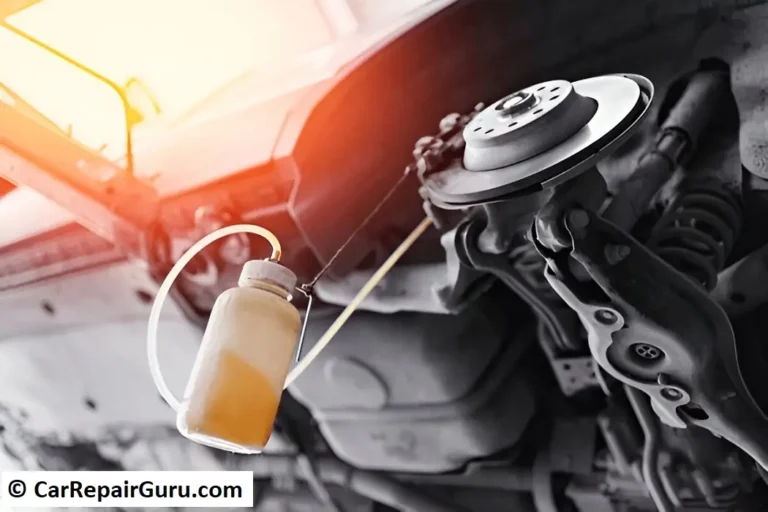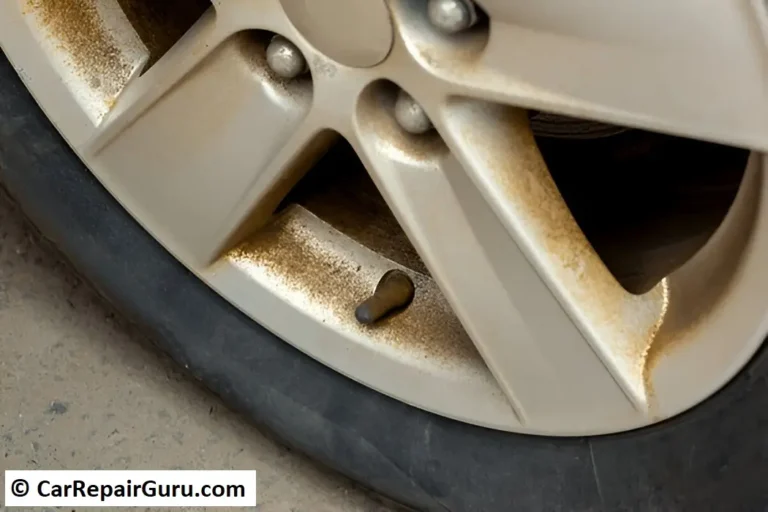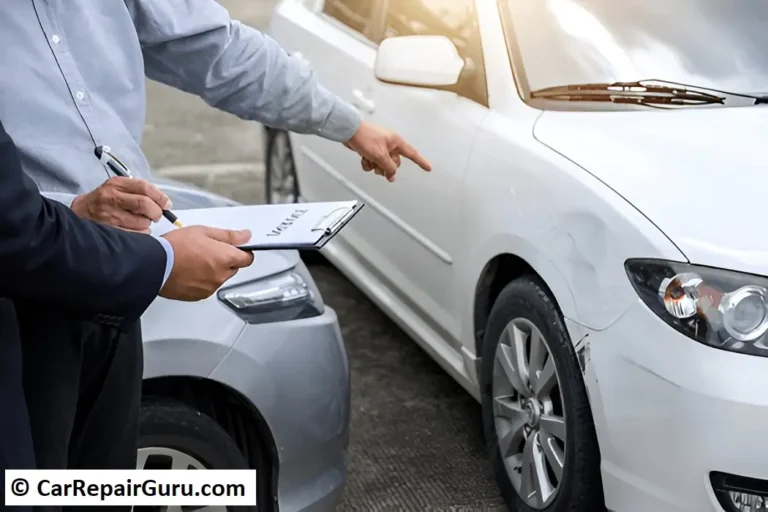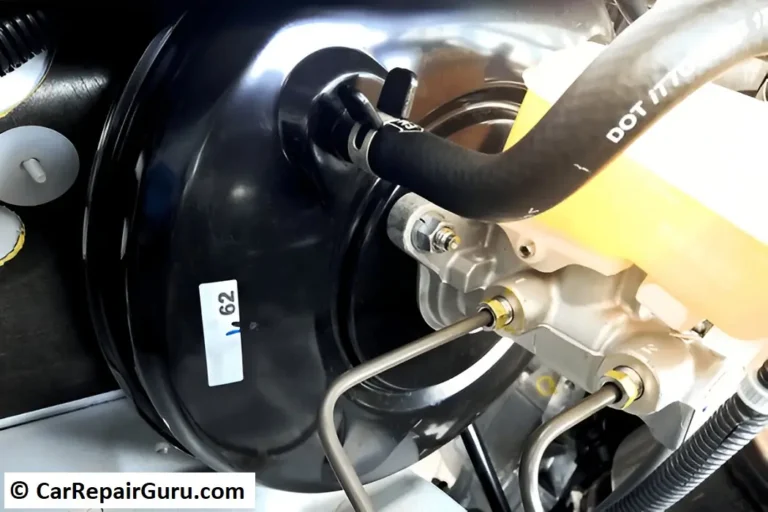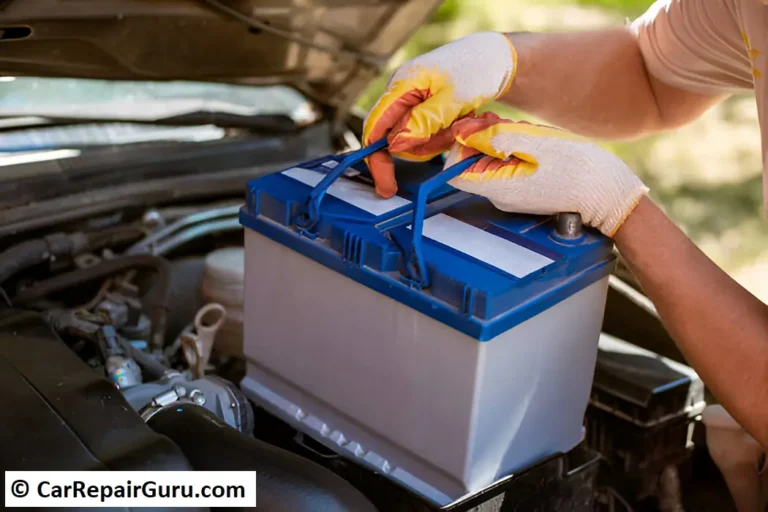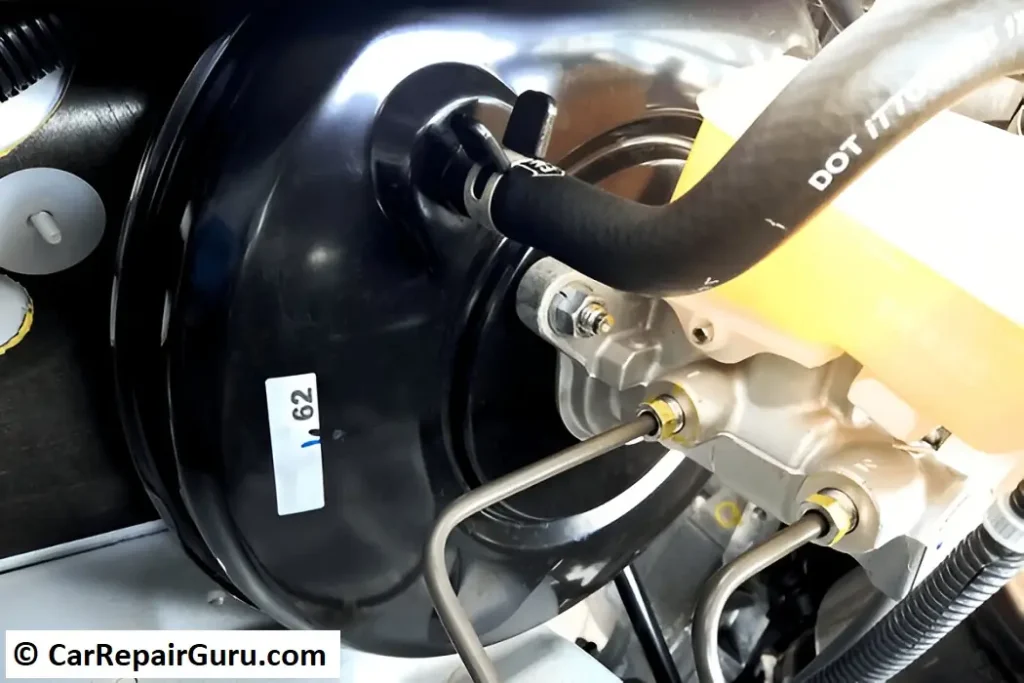
Braking is one of the most crucial aspects of driving, and the car brake booster plays a vital role in ensuring smooth and efficient braking. If you’ve ever wondered why modern vehicles require less effort to stop compared to older cars, the answer lies in this essential component.
What is a Car Brake Booster?
A car brake booster is a device that amplifies the force applied to the brake pedal, making it easier for the driver to bring the vehicle to a stop. It works by using vacuum or hydraulic pressure to enhance braking power, allowing you to stop quickly without exerting excessive force on the pedal. Without a properly functioning brake booster, you would need to press the brake pedal much harder, making driving less safe and more exhausting.
Why is the Brake Booster Crucial for Your Car’s Braking System?
The brake booster plays a critical role in improving vehicle safety. A failing booster can lead to longer stopping distances, hard brake pedal issues, and even engine stalling in some cases. Whether you’re driving in heavy traffic or navigating steep roads, having a responsive and efficient braking system is essential.
Understanding how the brake booster works and recognizing potential issues early can help prevent accidents and costly repairs. In the following sections, we’ll dive deeper into how this system functions, different types of brake boosters, common failure symptoms, and essential maintenance tips.
How Car Brake Boosters Work
Braking should feel effortless, and that’s where the car brake booster comes into play. This essential component enhances braking efficiency, ensuring you don’t have to apply excessive force to the brake pedal. But how exactly does it work?
The Role of the Brake Booster in the Braking Process
Without a brake booster, pressing the brake pedal would require significant effort, making driving unsafe and tiring. The booster amplifies the force you apply, sending increased pressure to the master cylinder, which then transfers hydraulic force to the brake calipers or wheel cylinders. This process ensures a smooth, responsive braking experience with minimal effort from the driver.
A failing booster means a hard brake pedal, increased stopping distances, and potential braking system failure—all of which can be dangerous, especially in emergency situations.
Understanding the Mechanics of Brake Boosters
Different types of brake boosters operate using distinct mechanisms:
- Vacuum Brake Boosters
The most common type, found in gasoline-powered vehicles. It uses the engine’s vacuum to create negative pressure, which helps amplify braking force. - Hydraulic Brake Boosters
Used in diesel trucks, heavy-duty vehicles, and powerful SUVs that lack sufficient engine vacuum. Instead of vacuum pressure, these boosters use hydraulic pressure from the power steering pump to assist braking. - Electro-Hydraulic Brake Boosters
Found in modern hybrids and electric vehicles, these boosters rely on an electric pump to generate hydraulic pressure, making them highly efficient and adaptable to new braking technologies.
Benefits of a Brake Booster
A well-functioning brake booster ensures:
✔ Effortless braking with minimal pedal force
✔ Faster stopping times, improving safety
✔ Consistent pedal feel, enhancing driver confidence
By keeping your brake booster in optimal condition, you can ensure a safer and more responsive braking system.
Types of Car Brake Boosters
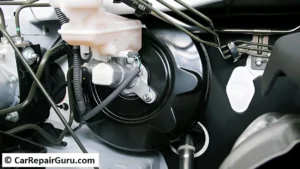
Not all car brake boosters work the same way. While their primary function remains the same—enhancing braking power—they use different mechanisms to achieve it. Understanding the different types of brake boosters can help you identify the right one for your vehicle and ensure efficient braking performance.
1. Vacuum Brake Boosters
Most Common | Found in Gasoline-Powered Vehicles
A vacuum brake booster is the standard type found in cars with internal combustion engines. It relies on the vacuum created by the engine’s intake manifold to generate the necessary pressure for braking assistance.
🛠 How It Works:
- When you press the brake pedal, the vacuum created in the booster helps reduce the effort needed to engage the braking system.
- This negative pressure amplifies the braking force applied by the driver.
🔹 Advantages:
✔ Simple and cost-effective design
✔ Reliable and widely available
✔ Works efficiently in gasoline-powered vehicles
🔸 Disadvantages:
✖ Not effective for diesel engines or electric vehicles
✖ Requires a functioning engine vacuum to operate
2. Hydraulic Brake Boosters
Ideal for Diesel and Heavy-Duty Vehicles
Unlike vacuum boosters, hydraulic brake boosters use hydraulic pressure from the power steering pump instead of an engine vacuum. This makes them ideal for diesel trucks and larger vehicles, where vacuum levels are insufficient.
🛠 How It Works:
- The power steering pump sends pressurized hydraulic fluid to the brake booster, assisting braking force.
- This ensures consistent and powerful braking performance, even under heavy loads.
🔹 Advantages:
✔ More powerful braking assistance for large vehicles
✔ Works in diesel engines, where vacuum pressure is unavailable
🔸 Disadvantages:
✖ Requires power steering fluid and pump maintenance
✖ Can fail if the power steering system malfunctions
3. Electro-Hydraulic Brake Boosters
Advanced Technology | Used in Hybrid and Electric Vehicles
As electric and hybrid vehicles lack a traditional engine vacuum, they rely on an electro-hydraulic brake booster. This system integrates an electric pump to create hydraulic pressure, ensuring efficient braking.
🛠 How It Works:
- The electronic system monitors braking inputs and adjusts hydraulic pressure accordingly.
- Often integrated with regenerative braking, allowing energy recovery in hybrid and EV models.
🔹 Advantages:
✔ Highly efficient, with adaptive braking control
✔ Works in electric and hybrid vehicles
✔ Can be integrated with ABS and stability control systems
🔸 Disadvantages:
✖ More expensive and complex than traditional boosters
✖ Requires specialized maintenance
Choosing the Right Brake Booster for Your Vehicle
Selecting the right brake booster depends on your vehicle’s engine type and braking needs:
✔ Gasoline-powered vehicles → Vacuum Brake Booster
✔ Diesel or heavy-duty vehicles → Hydraulic Brake Booster
✔ Hybrid or electric vehicles → Electro-Hydraulic Brake Booster
Understanding the differences between these brake boosters can help you make informed decisions about maintenance, upgrades, and troubleshooting potential braking issues.
Signs of a Failing Brake Booster
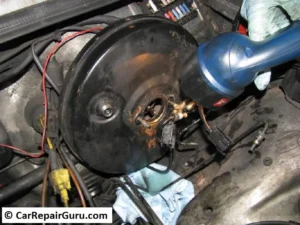
A properly functioning car brake booster ensures effortless braking and optimal stopping power. However, when the brake booster starts to fail, it can significantly affect your vehicle’s safety. Recognizing the early warning signs can help prevent dangerous situations on the road.
Symptoms of a Malfunctioning Brake Booster
🚨 1. Hard Brake Pedal
One of the most common signs of a bad brake booster is a stiff brake pedal that requires more force to press. Since the booster amplifies braking power, any failure means you must apply significantly more effort to stop the car.
🚨 2. Longer Stopping Distance
A failing brake booster reduces braking efficiency, increasing the distance your vehicle needs to stop. If you notice it takes longer to come to a complete stop, it could indicate that the booster is not providing the necessary assistance.
🚨 3. Engine Stalls When Braking
If your engine stalls or shakes when you press the brake pedal, this could point to a vacuum leak in the booster. This is especially common in vacuum brake boosters, where a failure disrupts the balance of air pressure in the engine.
🚨 4. Hissing Noise Under the Dashboard
A distinct hissing sound near the dashboard or brake pedal area often signals a vacuum leak in the brake booster diaphragm. This leak prevents the booster from generating enough pressure, leading to braking issues.
🚨 5. Increased Brake Effort at Low Speeds
If braking feels normal at high speeds but requires more effort at low speeds or in traffic, this could indicate a partially failing booster. It may still be functioning, but at a reduced capacity.
How a Bad Brake Booster Impacts Vehicle Safety
A malfunctioning brake booster compromises braking efficiency, making it harder to stop in emergency situations. This increases the risk of rear-end collisions, intersection accidents, and unexpected braking failures.
If you notice any of these warning signs, do not ignore them. Have your brake booster inspected and repaired immediately to ensure your vehicle’s safety and prevent costly repairs down the line.
Car Brake Booster Maintenance and Troubleshooting Tips
Keeping your car brake booster in top condition is essential for safe and efficient braking. Routine maintenance and early troubleshooting can prevent costly repairs and ensure your vehicle stops effectively when needed.
Routine Brake Booster Maintenance
✅ Regularly inspect the brake booster and components
- Check for visible damage or wear on the brake booster and its mounting brackets.
- Ensure the vacuum hoses (for vacuum boosters) are free from cracks, leaks, or disconnections.
✅ Monitor brake pedal response
- If the brake pedal feels stiff or requires extra pressure, the booster may need attention.
✅ Check for fluid leaks (for hydraulic and electro-hydraulic boosters)
- Inspect for power steering fluid leaks, as hydraulic boosters depend on the power steering system.
- For electro-hydraulic boosters, ensure the electric pump and wiring are functioning properly.
How to Troubleshoot Brake Booster Problems
🔍 Check for vacuum leaks (for vacuum brake boosters)
- Inspect the vacuum hose and connections for cracks or disconnections.
- Use a vacuum gauge to test if the booster maintains pressure.
🔍 Test the brake pedal pressure
- With the engine off, press the brake pedal a few times to remove vacuum pressure. Then, start the engine—if the pedal doesn’t slightly drop, the booster may be faulty.
🔍 Listen for unusual noises
- A hissing sound near the dashboard or brake pedal area often signals a vacuum leak.
When to Replace or Repair the Brake Booster
If you experience hard braking, longer stopping distances, or hissing sounds, it’s time to replace or repair the brake booster. Ignoring these signs can lead to brake failure, compromising your safety. Always consult a professional mechanic to diagnose and fix any brake booster issues promptly.
Conclusion
The car brake booster is a crucial component that enhances braking performance, ensuring a smoother and safer driving experience. Whether your vehicle uses a vacuum brake booster, hydraulic brake booster, or electro-hydraulic brake booster, maintaining its proper function is essential for optimal stopping power.
Ignoring signs of a failing brake booster, such as a stiff brake pedal, longer stopping distances, or unusual hissing noises, can compromise vehicle safety and lead to costly repairs. Regular inspection, maintenance, and timely troubleshooting can help prevent sudden brake failure and keep your braking system in top condition.
If you suspect any issues with your brake booster, it’s best to seek professional assistance immediately. Prioritizing brake system health ensures your vehicle remains safe, responsive, and efficient on the road—protecting you, your passengers, and others around you.
Car Brake Boosters FAQ
Q1: What happens if the brake booster fails?
A failing brake booster will make the brake pedal harder to press, resulting in longer stopping distances and less effective braking. It could also cause the engine to stall when braking, which can be dangerous.
Q2: How do I know if my brake booster is bad?
Signs of a bad brake booster include a stiff brake pedal, increased braking distance, engine stalling, and a hissing sound when pressing the brake pedal. If you notice any of these symptoms, it’s important to get your booster inspected.
Q3: Can a bad brake booster cause engine problems?
Yes, particularly if the brake booster uses vacuum pressure. A vacuum leak can cause the engine to stall or run rough. It’s essential to repair the booster promptly to avoid engine performance issues.
Q4: How much does brake booster replacement cost?
The cost of replacing a brake booster varies depending on the vehicle model and location but typically ranges from $300 to $600, including parts and labor.
Q5: Can I drive with a failing brake booster?
While you can technically drive with a failing brake booster, it’s not recommended due to the significant impact on braking performance and safety. It’s best to address the issue immediately.

